This page is all about our subarctic garden trials!
Some people like to grow what will will work. We like to trial and experiment with things, especially when they have very little information out there about cold climate performance.
Or, perhaps we’re trying to solve a consistent garden problem and we found what works!
This is a catalog of all the various experiments that we’ve conducted. Each includes the variety grown, methods we used and the general results we received. Our goal is to maintain this page with trials, as we perform them.
Subarctic Okra Trials
Okra is not a particularly popular thing to grow up north. It does well in the south, but in northern climates, it is widely reported as unsuccessful. Some even said it didn’t work at all! So we sought to find out for ourselves.
Variety: Clemson Spineless
- Gardening Method: Container (5 gallon bucket)
- Location: Greenhouse
- Result: Produced, Highly marginal
- Status: Would not likely grow again
Clemson Spineless is a variety known to mature within a 100 day window and is also somewhat tolerant to cooler climates.
In our test, we grew four Clemson Spineless okra plants from seed. Two of the best garden starts were selected for further growth.
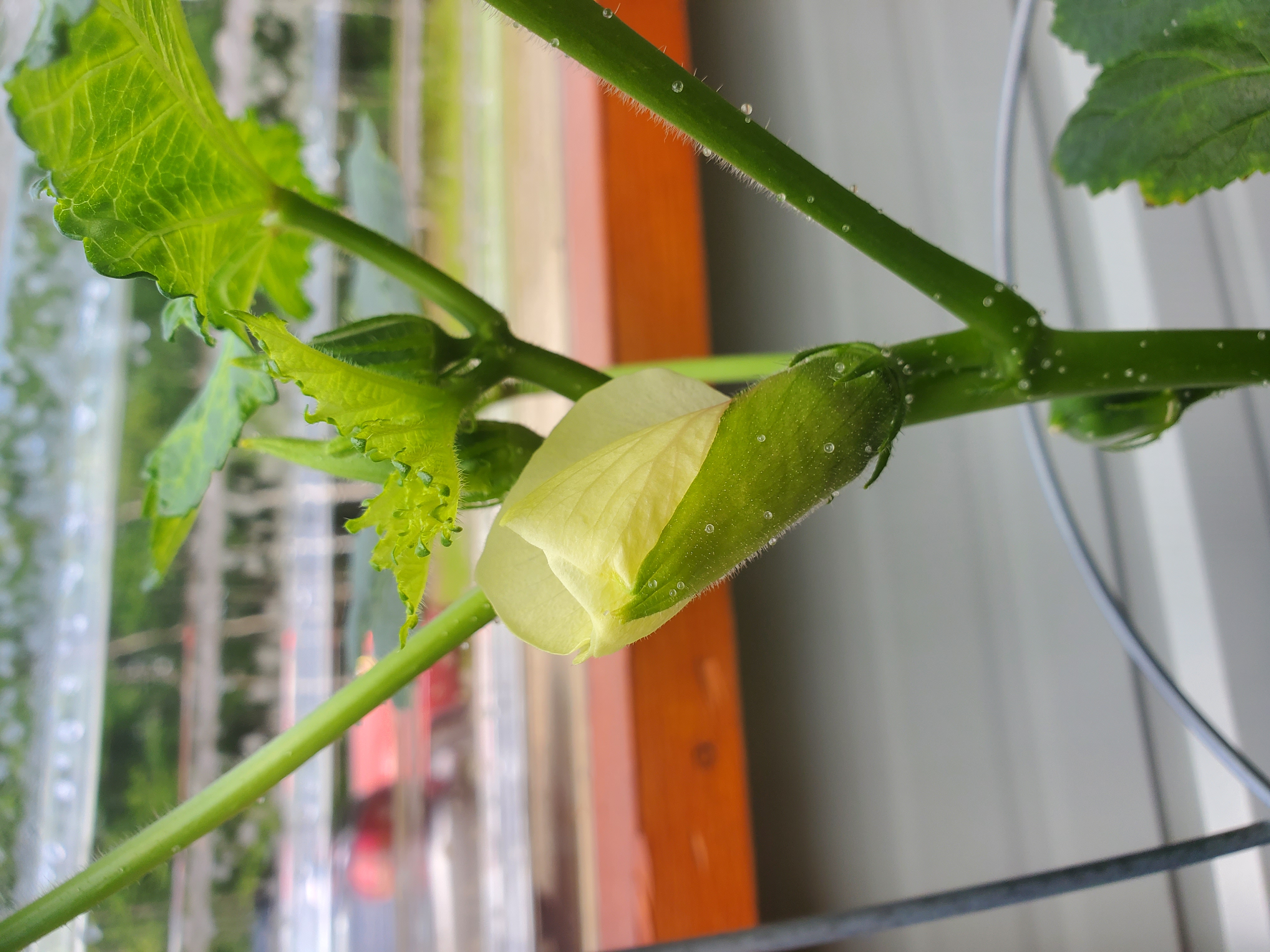 They were grown in our greenhouse in 5 gallon sub irrigated buckets. Despite a relatively cool summer, we were able to get marginal production from our plants. Approximately 5 full size pieces of okra from both plants.
They were grown in our greenhouse in 5 gallon sub irrigated buckets. Despite a relatively cool summer, we were able to get marginal production from our plants. Approximately 5 full size pieces of okra from both plants.
This proved to us that it is possible to grow okra in the subarctic, but ultimately, it did not meet our production goals. Subarctic Okra trials are on hold for now.
Subarctic Melon Trials
Many types of melons are quite doable in the subarctic greenhouse, especially if you’re willing to hand pollinate. It is far more difficult to get them to work outdoors, however, and no known varieties exist. (Yet!)
Variety: Minnesota Midget
- Gardening Method: Container (5 gallon bucket)
- Location: Outdoors
- Result: Mixed
- Status: Needs further experimentation
The Minnesota Midget is one of the most cold-climate friendly melons out there. It is known to perform well in the most northern reaches of the lower 48. We had high hopes for our trial.
Our first year was a failure. We experienced a few abrupt drops into the 30’s in late June, which killed the Minnesota midget plants.
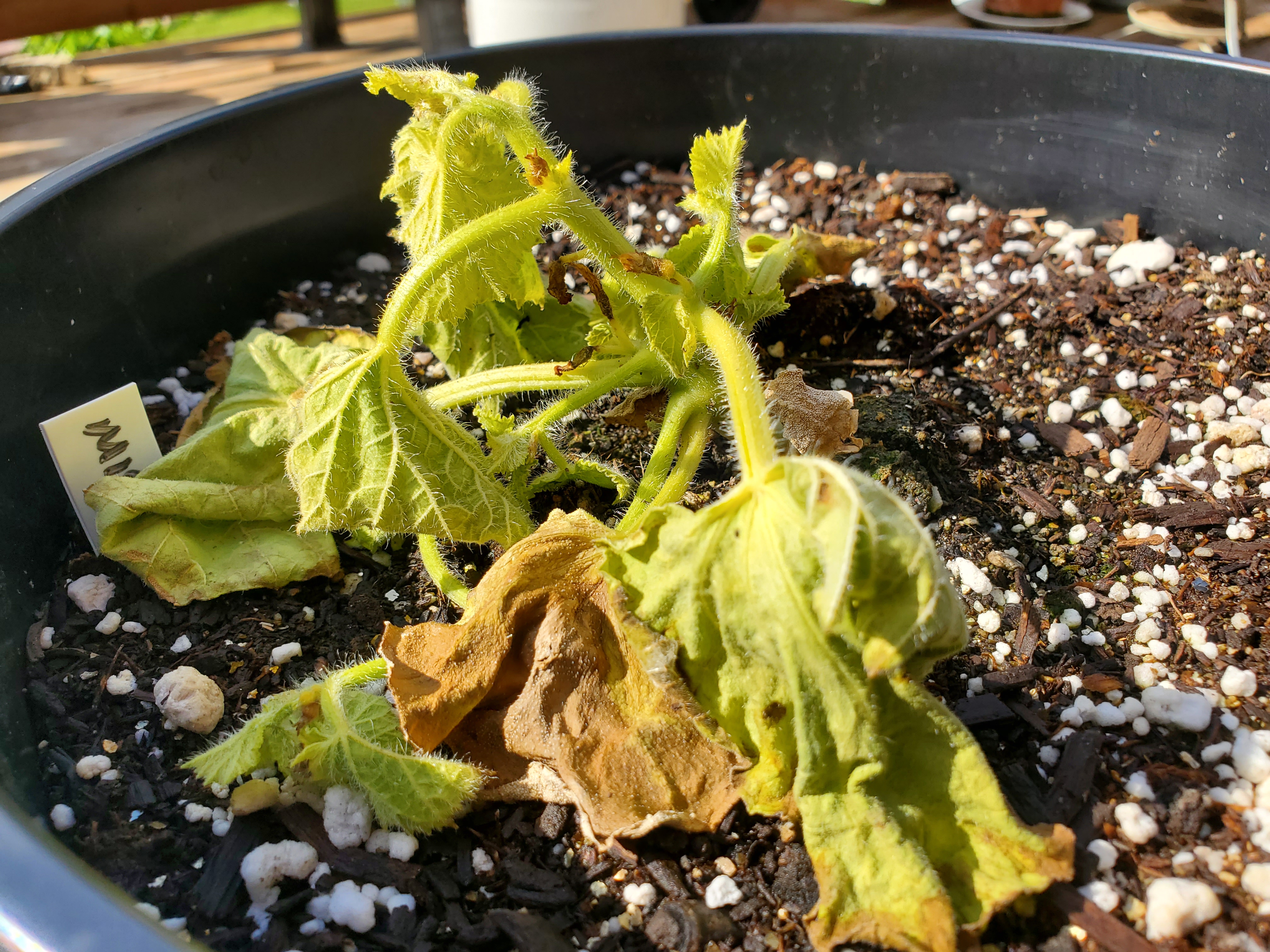 Our second and third attempt were a bit more successful. We experienced rather low production both years, typically getting 1-3 small melons across two plants. The flowers are also very tiny, making pollination by hand difficult.
Our second and third attempt were a bit more successful. We experienced rather low production both years, typically getting 1-3 small melons across two plants. The flowers are also very tiny, making pollination by hand difficult.
We are likely to continue melon trials as more varieties become available, but the Minnesota Midget hasn’t proven itself for us.
Litchi Tomato Trials
Litchi tomatoes are a highly interesting plant, typically found in southern latitudes. They are characteristically laden with sharp, large thorns.
Variety: Litchi Tomato
- Gardening Method: Container (5 gallon bucket)
- Location: Outdoors
- Result: Marginal
- Status: Unlikely to grow again
We grew three litchi tomatoes from seed and selected two for further growth.
The growth of the litchi tomato was incredible and certainly ranks in one of the most interesting plants we’ve ever grown. We saw 5-6 foot plants with very heavy flower growth.
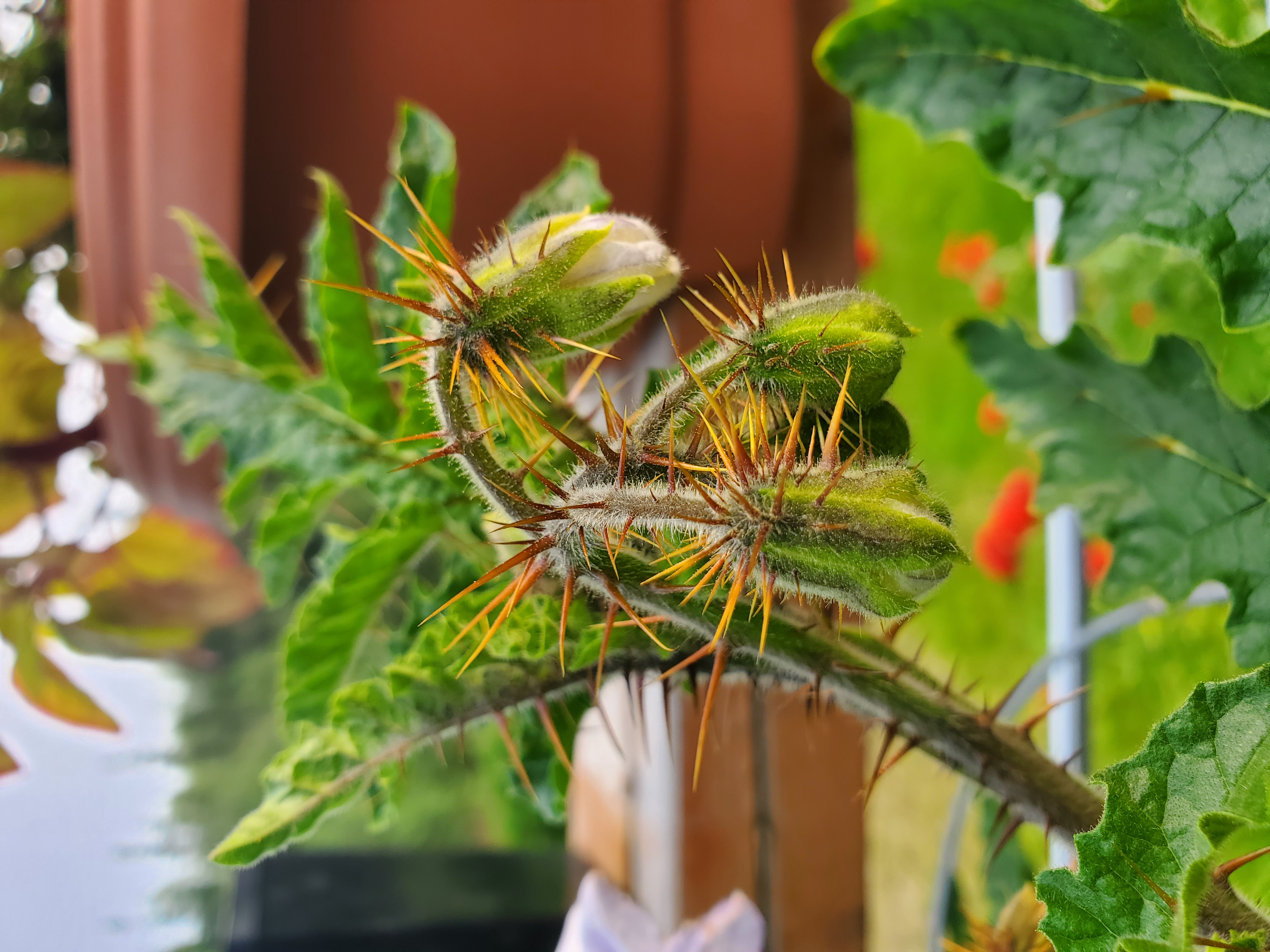 Our plants exhibited great cold climate tolerance and were able to fruit, despite a cool summer. However, despite this, none of our fruits were able to mature during the 3 month summer.
Our plants exhibited great cold climate tolerance and were able to fruit, despite a cool summer. However, despite this, none of our fruits were able to mature during the 3 month summer.
Further experiments would involve starting them earlier (~8-10 weeks) and growing in greenhouse conditions. This is further complicated as the litchi tomato is a strictly monecious variety, requiring pollination between flowers.
More importantly, taking down the litchi at the end of the season was a miserable experience, resulting in blood loss.
Subarctic Cucumber Trials
Cucumbers can do quite well in greenhouses in the subarctic. Often, in good summers, they will also heavily produce outdoors
Variety: Mexican Gherkin (Cucamelon)
- Gardening Method: Raised beds with trellis
- Location: Outdoors
- Result: Failed
- Status: Little interest in continuing trials
The logic behind trying the Mexican Gherkin was that it was a small cucumber that might produce quite prolifically. We grew about (6) plants from seed and planted all of them.
Growth was fairly slow throughout the season, though it was generally a cool subarctic summer the year we grew them. While both male and female flowers presented, quite prolifically, none of our cucumbers grew to any substantial size.
We believe this to be climate related and not related to pollinators. We might consider trying them again, but have very little interest in doing so.
Subarctic Eggplant Trials
Eggplants aren’t the most popular thing to grow anywhere, but especially so in the subarctic. We like to make an Eggplant Parmesan every now and again, so we were interested in seeing if it could be done.
Variety: Patio Baby Eggplant
- Gardening Method: Container (5 gallon bucket)
- Location: Outdoors
- Result: Success!
- Status: Regular production
We really wanted to find a container friendly, relatively small eggplant variety to test out. We tried the Patio Baby Eggplant and wanted to see how well they could do outdoors.
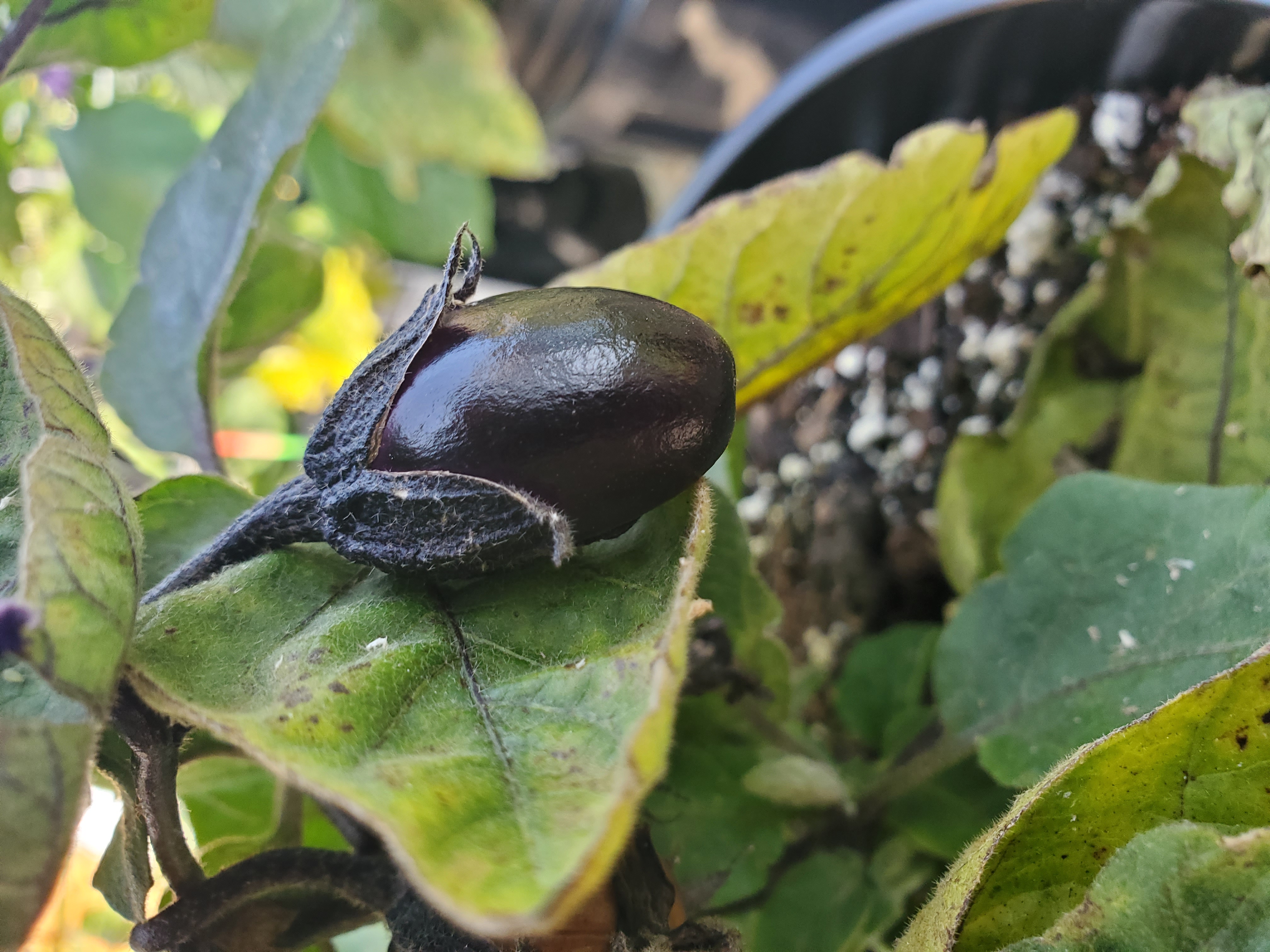 Our initial trials have turned into a plant that is now a part of our regular production. In most average summers, we get a useable number of eggplants from four plants. In cold summers, however, production can be quite low.
Our initial trials have turned into a plant that is now a part of our regular production. In most average summers, we get a useable number of eggplants from four plants. In cold summers, however, production can be quite low.
Although every year isn’t the success we hope, there have been enough successes to continue production of this plant. We are also looking at trying these in our subarctic greenhouse.
Subarctic Cauliflower Trials
For some reason, cauliflower threw inexplicable troubles our way. We experienced difficulties from year to year, despite being quite capable at growing all other brassicas.
Variety: Amazing
- Gardening Method: Wide raised row in-ground garden
- Location: Outdoors
- Result: Success!
- Status: Regular production
When we read the description for the Amazing cauliflower, we knew we had to try it. It features both cool and warm temperature tolerance, producing well even in difficult environments.

This proved to be exactly true for us. In a summer where practically every single gardener experienced cauliflower troubles, we walked away with the harvest of our lifetime.
Every head produced very well, offering well blanched heads of substantial size. They were extremely tolerant of being harvested over a fairly long period of time.
In our initial year, there were no failures to speak of. Taste is excellent and well suited to anything one would use cauliflower in.
We will continue growing this variety every year. Based on the difficulties we’ve had in the past, this is now our go-to cauliflower variety.
Subarctic Pepper Trials
Given our interest in growing subarctic peppers, we suspect that eventually our pepper trials will require their very own page some day.
Variety: Brazilian Starfish (Capsicum Baccatum)
- Gardening Method: Container (5 gallon sub irrigated bucket)
- Location: Greenhouse
- Result: Marginal
- Status: Unlikely to continue trials
We wanted to try a capsicum baccatum in our greenhouse as we had never grown them, nor was there much cold climate data about them. The logic was that this fairly small pepper might grow and mature well in subarctic climates.
In our trial, we grew three plants and selected two for further production.

This was an interesting pepper that grew in a vine-like structure. It reached about 4 feet tall and produced several flower sites. While flower production was relatively minimal for such a large plant, we did see fruit set.
Unfortunately, this pepper appears to require fairly lengthy maturation time. While we were able to get several fruit to produce, in the end, only one single pepper actually reached maturity.
We are super proud of what is likely to be one of only a very few subarctic grown capsicum baccatum peppers, though!
Variety: Bulgarian Carrot Pepper
- Gardening Method: Container (5 gallon sub irrigated bucket)
- Location: Outdoors
- Result: Success!
- Status: Continual annual production
We did a deep dive into cold climate peppers and the Bulgarian Carrot pepper popped up on our list.
For our initial trial, we grew three plants and selected two for further maturity.

The production was rather excellent in subarctic conditions. The peppers commonly mature, outdoors, around 60 to 70 days. Growth is also on the high end, with each plant commonly producing 6-8 peppers and sometimes more.
This pepper is now part of our regular production. They are a particularly hot pepper, which is great as it fills out the higher end of our heat range.
Variety: Shishito
- Gardening Method: Container (5 gallon sub irrigated bucket)
- Location: Outdoors
- Result: Success!
- Status: Continual annual production
In our attempts to find solid sweet peppers to grow in the subarctic, the shishito pepper came to our attention. This pepper has seen recent popularity in culinary circles.
Our initial trial was conducted with five plants, four of which were brought to full maturity.
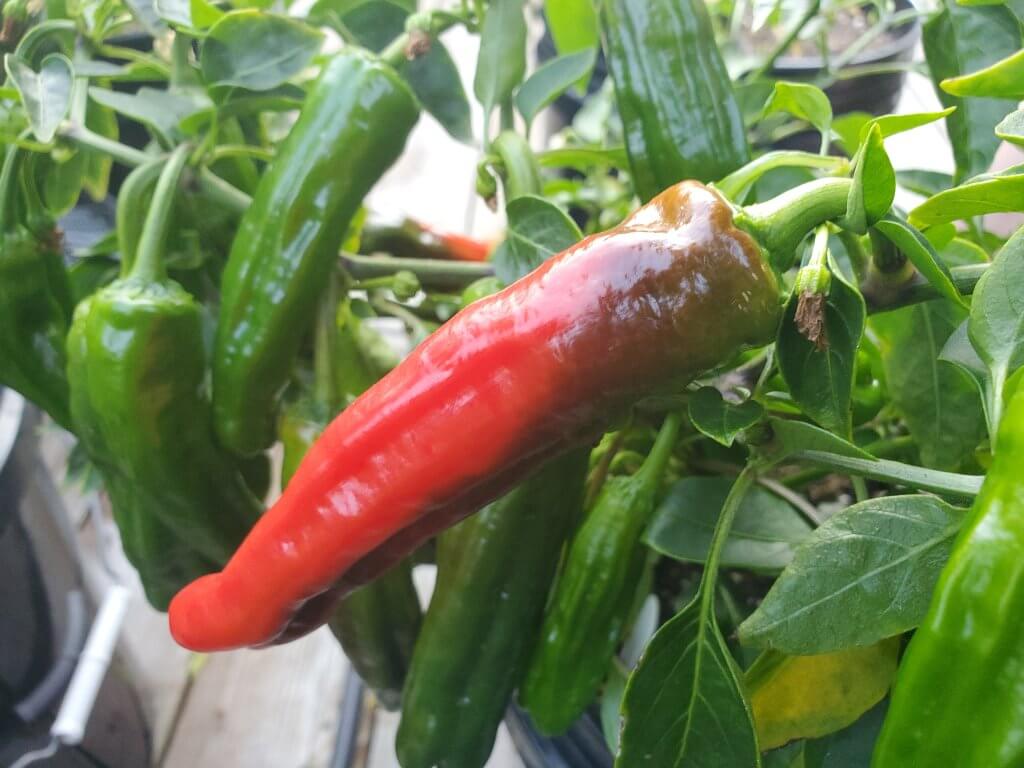
Production was excellent from all of our plants. Each plant will put on 12+ rather lengthy peppers. They commonly will mature to full red within the summer season. Flavor is excellent, taking particularly well to roasting.
We now regularly produce this pepper variety every season.
That’s All We Wrote!

Having a good time? We have an ever growing list of insightful and helpful subarctic & cold climate gardening articles, waiting out there for you!
- Cold Climate Gardening Basics 👉
- Growing Your Garden From Seed Indoors 👉
- Advanced Cold Climate Gardening Techniques 👉
- Plant Specific Cold Climate Growing Guides 👉
- Subarctic Perennial Food Forests & Foraging 👉
- Indoor Garden Lighting & Grow Rooms 👉
- Greenhouses & Temperature Control 👉
- Harvesting & Food Preservation 👉
- Solving Cold Climate Garden Problems 👉
- 1 Minute Reads On Tons Of Garden Topics 👉
FrostyGarden.com is 100% ad-free and we do not use affiliate links! This resource is voluntarily supported by our readers. (Like YOU!) If we provided you value, would you consider supporting us?
